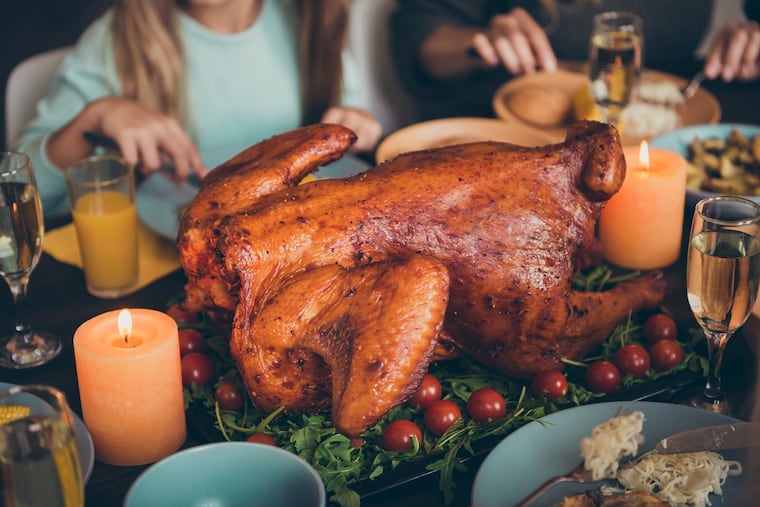Gratitude isn’t just polite. A Philly-born psychology movement shows it is a path to happiness.
Positive psychology shows that there are benefits to practicing gratitude all year round.

Pause for a second. Take a breath. With so much on our minds and our seasonal to-do lists, when was the last time you focused on things that are going well — big or small?
Psychology shows that taking a moment every day or even every week to express gratitude can increase happiness.
» READ MORE: Write a thank you letter this holiday season. It could bring ‘tears of joy’ — to you and the recipient.
An entire branch in psychology dedicated to what makes individuals and communities thrive, called positive psychology, started here in Philadelphia, through research by University of Pennsylvania psychologist Martin Seligman.
Gratitude ranks among the most important “character strengths” that help people thrive, according to experts in the field.
Suzann Pileggi Pawelski, the co-author of Happy Together: Using the Science of Positive Psychology to Build Love That Lasts, called gratitude the “key to our well-being.”
“It’s incredibly powerful,” she said.
A skill
Gratitude is a skill that anyone can develop.
Even the simple act of writing down three good things that happened today and why can influence how you feel at the end of the day.
This exercise makes us intentionally focus on what did go well and why, which is important because we tend to forget good things, explains James Pawelski, a professor of positive psychology at the University of Pennsylvania and co-author of Happy Together.
» READ MORE: Practicing gratitude with kids is as simple as eating M&Ms
The brain is hard-wired to fixate on what can go wrong, on perceived threats, research has found. Intentionally focusing on things for which people feel grateful can help to shift that mindset. Research has shown that practicing gratitude can help people to experience more happiness and less depression.
“Ignoring problems is not a recipe for thriving,” Pawelski said. “But perseverating on perceived threats isn’t a recipe for thriving, either.”
Other studies have found that people who practice gratitude report greater well-being and improved physical health.
Still, don’t confuse positive psychology with positive thinking. The goal is not to develop a skill that will help ignore or minimize problems but rather to focus on the issues that matter.
Best practice
Bindu Kumar, a family medicine physician at Main Line Health, learned the power of gratitude from a close friend with advanced breast cancer.
“She was constantly thinking about what she was grateful for, and it seemed to really help her,” Kumar said of her friend, who persevered through treatment and complications with four young children at home.
» READ MORE: Six gratitude practices to improve your happiness
Kumar has incorporated gratitude in her work overseeing employee health and safety for the health system in Philadelphia and its western suburbs.
Many physicians ask patients to track their diet, blood pressure, and other health details. She began asking sick health-care workers to also jot down what they are grateful for.
“I’ve seen more successful return to work, more successful return to pre-injury and [pre]-accident state when individuals show and practice gratitude,” Kumar said.
Part of the routine
Practicing gratitude can be especially comforting for those going through a tough time. But it can be part of anyone’s routine.
Adrian Sullivan Jr., a 28-year-old entrepreneur, started gratitude journaling about three years ago. He uses the Five Minute Journal, a book and app featuring daily writing prompts, such as “name three things you’re grateful for” or “write about what went well today.”
The former football player at Temple University compared practicing gratitude with working out. He has found that gratitude works like a “muscle in your brain” that is designed to help you “have a positive lens.”
Three years into journaling, he feels more prepared for his days and happier, Sullivan said.
“I’m a lot more positive,” he said, “and it feels good.”